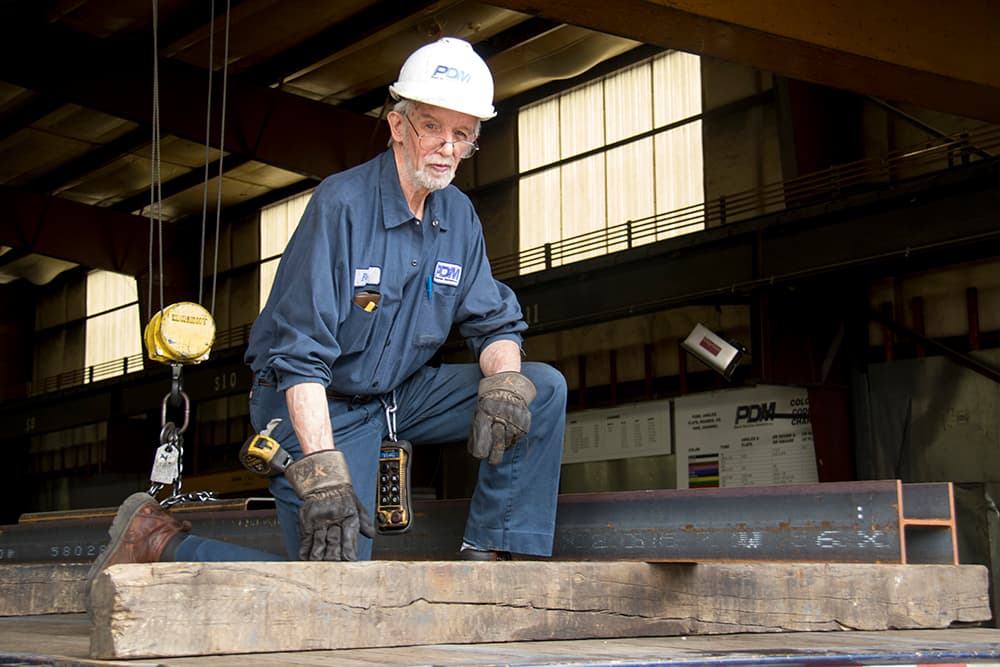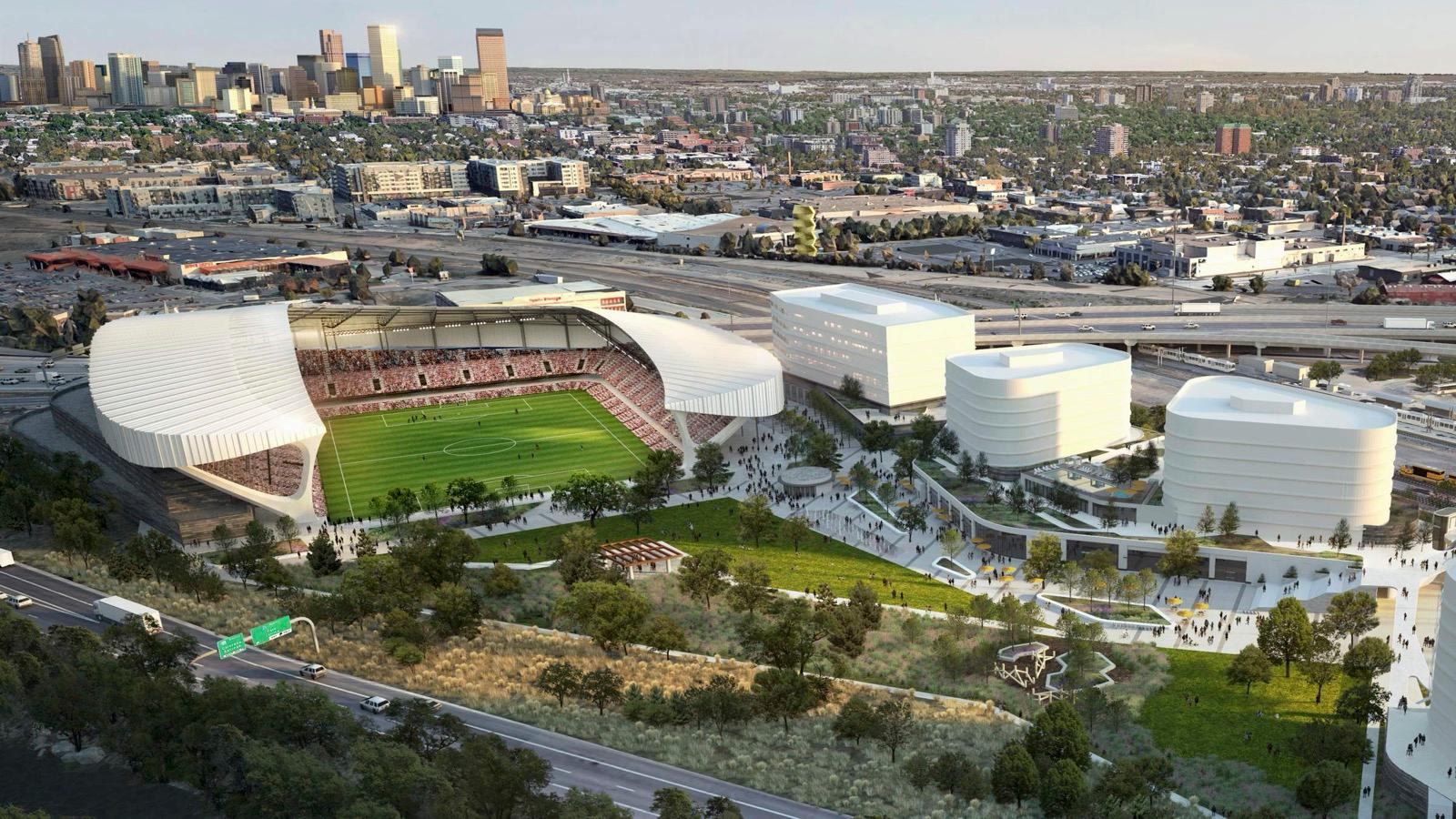
Here's how Kristin Cardenas describes North Washington Street where it runs through Globeville.
"It's just such a massive street, and it's connecting so many parts of Adams County, Denver, the stock show, you name it," said Cardenas, a parent at Garden Place Academy and member of the steering committee for Denver's Washington Street Study. "People are forced to use it to get to school and to work and for highway access. It's so unsafe. There are practically no sidewalks. There are large trucks going back and forth.
"You have parents walking up and down Washington Street with a stroller and a bunch of kids, and there is no sidewalk, and it is so unsafe."
These are the conditions that led the reconstruction of Washington Street to be included in Globeville's 2014 neighborhood plan, which imagines Washington Street as a "mixed-use riverfront destination area that capitalizes on its adjacency to the South Platte River." And these are the conditions that should start to be resolved with $23 million in Denver's 2017 general obligation bond package, which goes to voters this November.
The reconstruction of Washington Street from 47th to 52nd is one of a set of projects intended to benefit residents of the Globeville, Elyria and Swansea neighborhoods in northeast Denver as the city pours more than $1 billion into the creation of a new National Western Center in their midst and CDOT prepares to widen I-70. Long neglected by the city, these neighborhoods are now buffeted by rising rents and property taxes that are driving out long-time residents.
Other projects include: $9.4 million for a bike and pedestrian bridge at York and 47th streets, $17 million for "pedestrian connectivity" in all three neighborhoods, where sidewalks are often missing, and $15.2 million for an indoor pool at Swansea Recreation Center.
The timing of these projects, though, has raised suspicions in some quarters that all of these nice things are for the new residents who will occupy a gentrified GES in 10 years and anger that the city isn't putting money into helping existing residents stay put.

Some people think the project is simply misguided.
"You talk about multimodal? I'd like to see the mayor ride a bike down Washington Street and see how far they get before they get run over by a 16-wheeler," said Armando Payan, a longtime resident of Globeville and member of United Community Action Network. "Meanwhile, they won't enforce on tractor-trailers coming down residential streets. I will not get on a bike and go down Washington Street. I've been here since 1961, and I don't see it getting better."
Payan believes the neighborhood plan itself goes in the wrong direction. What he wants is a "neighborhood environmental plan" that provides money in perpetuity to offset the impact of the highways and a heavy industrial presence.
George Payan, Armando's brother, said the street needs sidewalks and isn't safe for pedestrians, but he wonders where bike lines would even go.
"There's no place to put that, unless you do away with a few commercial properties," he said. "It's a hard one. Me, myself, I would not like more traffic on Washington Street because that just brings more pollution, and we've already been hit with so many industrial chemicals."
But Elizabeth Bugay, an executive assistant at Project Angel Heart, a nonprofit that provides meals to people with life-threatening illnesses, said the project is "absolutely" a community priority. Project Angel Heart has its kitchen and offices on Washington, and when Bugay first started as a volunteer working at night, she worried often about accidentally hitting a pedestrian.
"I think everyone, including the businesses, would like a way for traffic flow to be better," said Bugay, who is also on the steering committee.
"I’m not sure how that would be accomplished, but that’s the purpose of the study. We would like to see, if possible, sidewalks. We’re mostly just concerned about the traffic congestion in terms of safety for our volunteers and our clients and our staff and our neighbors."

What does the city actually plan to do to Washington Street?
It's not set in stone, and it might look different on different blocks. Karen Good, project manager for the Washington Street Study, said city officials hope to have a preliminary design based off community input by the end of the year. There are physical constraints -- the right of way is just 60 feet wide -- and there are a lot of competing users.
The end goal: A street that is safe for all users.
There's a lot of different ways the city could put in pedestrian and bike infrastructure here depending on which uses get priority, and that's one of the things planners will be working on, Good said. "What is on the street? How many lanes? How much sidewalk? What should the bike facilities be? What about street trees?"
With sidewalks that connect and are the right width, it's also a lot easier to put in bus stops and give people a safe place to wait.
Good said the city is committed to making this project happen.
"It's really critical for the community to know that this is not just talk," she said.
Sensing he was out on his own on this one (a common place for him to be), Councilman Rafael Espinoza didn't ask for Washington Street to come out of the bond package, but in a committee meeting and again in an interview, he questioned why it wasn't being paid for out of the money for redeveloping the National Western. In the give and take around the contents of the bond package, $23 million could have paid for a lot of other stuff.
"They’ve got nearly a billion," he said of the NDCC. "They should have the $23 million to do infrastructure work (on Washington Street). That route has been servicing Denver the way it is for a long time, and that neighborhood hasn’t radically changed. ... This is all about NDCC and the 'corridor of opportunity' and not about GES."
Council President Albus Brooks, whose District 9 includes GES, said Washington Street is absolutely a community priority -- he even produced a letter from the National Western Center's Citizens' Advisory Committee saying it is -- and he called it "unfortunate" that that was called into question.
"I think that corridor will support the National Western Center, but it will also support sidewalks," he said. "It will support bike lanes."
He expressed some frustration that after years of work to find funding for these projects, activists are pushing for even more.
"The problem is, they've been supporting (the infrastructure projects) for three years, and now they want a community land trust," said Brooks, quickly adding that he also supports the idea of a community land trust. (You can read more about that idea here.)
Cardenas doesn't doubt that the coming development at the National Western helped make Washington Street a priority for the city, but it's been a priority for the community for years.
"And that's where some the frustration comes from, that it took this long," she said. "Does it have to do with the National Western and these other projects? Probably so. But the project is moving forward. ... You can look at the past and wonder what their intentions are, or you can work with them and make sure it's an authentic project that responds to the community's needs."
Next steps:
Denver City Council votes on the bond package Monday, Aug. 14. Voters will have their say in November.
The second Washington Street Study Open House is scheduled for Tuesday, Aug. 15, from 5:30 to 7:30 p.m. at Garden Place Academy.













